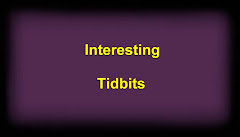 Does Cornell University's campus look like it needs New York State Public assistance, in the form of billions of dollars? New York State has been using your tax money, supporting private schools for decades.
Does Cornell University's campus look like it needs New York State Public assistance, in the form of billions of dollars? New York State has been using your tax money, supporting private schools for decades.
Maybe a part of what has been askew with New York States Public University System is that taxpayers have been duped into funding and providing public assistance in the form of billions and billions of dollars to PRIVATE colleges and universities located in NYS... instead of using this money to build a better SUNY.
Now, private schools seek aid, and their lobbying group pushes for share of proposed $4B New York State Higher Education endowment recently proposed by Governor Spitzer. How in the world can New York State taxpayers being funding private colleges and universities with billions of dollars in funding? What about 'private university' doesn't the New York State government understand.
"New York wants a top public university system. It already has a leading private one.
Now the state faces new questions on how to support both.
The spotlight is keyed in on boosting SUNY. But New York's private colleges -- the world's biggest sector of private higher education -- also are pushing for more state support.
Their agenda: A low-cost student loan program with debt forgiveness for graduates who stay in New York. More tuition assistance. Billions in research grants.
These also would be open to the publics. They'd draw on the same $4 billion endowment, funded by leasing some of the state Lottery, that Gov. Eliot Spitzer proposed to shore up SUNY and CUNY.
The programs could expand a deep pool of public money available to a private education sector that has historically wielded great influence in Albany.
Tuition. Construction. Operations. All are subsidized by state programs and grants.
Private colleges cashed in some $9 million between April 2003 and March 2005 from the state's taxpayer-funded pork barrel "member item" account, according to a Times Union analysis. That included $735,000 for Columbia University and around $1.6 million for New York University.
Spitzer, meanwhile, just committed $50 million for a building at University of Rochester, which has a $1.7 billion endowment. SUNY's University at Albany has a $30 million endowment.
State support for private colleges and their students adds up to about $350 million a year, not including capital projects, according to the private schools. Some put the number higher. Some question the investment. And some legislators have pushed to reduce it.
"I think there has to be a much more judicious, careful study of what the state gains from allocating funds to private institutions," said Pedro Caban, SUNY's vice provost for diversity and educational equity. "We have to ask some basic questions. If an institution has a billion-dollar endowment, should it not take moneys from those endowments to provide tuition support rather than depending on public funds to provide tuition support?"
Abe Lackman, president of the lobbying group that represents private colleges in Albany, argues that his sector is a bargain for taxpayers.
The more than 100 private colleges that belong to Lackman's Commission on Independent Colleges and Universities enroll about 460,000 students, compared with 427,000 at SUNY's 64 schools. They fulfill a public purpose. And they serve greater numbers of low- and moderate-income students than SUNY or CUNY, according to the commission.
Private colleges "relieve an extraordinary burden" that taxpayers would have to bear, said Lackman, a former Senate finance committee secretary and special adviser to Senate Majority Leader Joseph L. Bruno. New York's private schools are magnets for out-of-state students, he added.
Meanwhile, a task force that Spitzer formed to elevate higher education highlighted "grave concerns" about SUNY and CUNY in a December report.
"While New York's private research universities are widely recognized as world-class institutions," the report said, "SUNY and CUNY need significant investment to become competitive with other states' top public research universities."
A degree of tension has always existed between public and private colleges in New York. It flares up periodically, said Henry Steck, a SUNY Cortland political science professor who has studied state aid to the privates. At one point it was characterized as "nearly warfare."
There's a long history to this tale of two systems.
Go back to the mid-1800s. National sentiment back then "supported the establishment of the great state land-grant universities," according to former SUNY Vice Chancellor for Legal Affairs Sanford Levine. That mainly grew out of the Morrill Act of 1862, "which provided for grants of federal lands to states for the creation of educational institutions," he said.
"In New York, however, the push for public higher education met a resistance not experienced in other states due to our exceptional tradition of first-rate, strong independent private colleges," according to a 1988 speech Levine gave on SUNY.
Cornell University became New York's land-grant school. It wasn't until the 1940s that different forces propelled the creation of SUNY, one of the country's youngest state systems.
Still, New York has maintained a commitment to its private schools. That annual commitment includes roughly $250 million through the Tuition Assistance Program; $46 million in unrestricted "Bundy Aid" and about $300 million for capital projects over the past decade.
"I doubt that the public in New York is aware of the support that the state gives to private institutions," said Barbara Bowen, head of CUNY's faculty union. "But I also at the same time bet that most of the public is not aware of how underfunded SUNY and CUNY have been." Parry can be reached at 454-5057 or by e-mail at mparry@timesunion.com. Aaron Ancel, a data analyst, contributed research to this report." Courtesy: M. Parry
Contact your New York State government representative in the NYS Senate and NYS Assembly... Voice your opinion on this matter.
Governor Patterson:
Assemblyman Ron Canestrari:
canestr@assembly.state.ny.us
Assembly Speaker Sheldon Silver:
speaker@assembly.state.ny.us
Assembly Minority Leader James Tedisco:
tediscj@ assembly.state.ny.us
Assemblyman John McEneny
mcenenj@assembly.state.ny.us
NYS Senator Hugh Farley
farley@senate.state.ny.us
NYS Senator Neil Breslin
breslin@senate.state.ny.us
NYS Senate Majority Leader Joe Bruno:
bruno@senate.state.ny.us
NYS Senate Minority Leader Malcom Smith:
masmith@senate.state.ny.us
City of Albany: Mayor Jennings
mayor@ci.albany.ny.us
President of The University of the State of New York (USNY) and Commissioner of Education: Richard P. Mills
Interim SUNY Chancellor: Dr. John B. Clark
NYS Commission on Higher Education
hecomm.sm.web@nysemail.state.ny.us
Thursday, March 20, 2008
NY Private Universities Want Public Aid: They Want To Steal a Share of $4B State Endowment
Posted by
BRE
at
5:42 AM
![]()
Labels: New York State, SUNY, University of Albany
Subscribe to:
Post Comments (Atom)

.jpg)




.jpg)
+(2).jpg)
.jpg)
.jpg)

.jpg)
+(2).jpg)
+(2).jpg)
+(2).jpg)
_(2)+(2).jpg)
+(2).jpg)
+(2).jpg)
_(2)+(2).jpg)
+(2).jpg)


.jpg)
.jpg)
+(2).png)
+(2).jpg)
.jpg)
.jpg)
+(2).jpg)
+(2).jpg)
+(2).jpg)
.jpg)
+(2).jpg)
+(2).jpg)
+(2).jpg)
_(2)+(2).jpg)
+(2).jpg)
.jpg)
+(2).jpg)
+(2).jpg)
+(2).jpg)
.jpg)
.jpg)
+(2).png)
.jpg)
.jpg)
.jpg)
.jpg)
+(2).jpg)
+(2).jpg)

.jpg)

+(2).jpg)
.jpg)
.jpg)
.jpg)
.jpg)
.jpg)
.jpg)
.jpg)
.jpg)
.jpg)
.jpg)
.jpg)
.jpg)
.jpg)
.jpg)
.jpg)
.png)
.png)
.jpg)
.jpg)
.jpg)
.jpg)
.jpg)
.jpg)
+(2).jpg)
.jpg)
+(2).jpg)
.jpg)
+(2).jpg)
.jpg)
.jpg)
.jpg)
.jpg)
.jpg)
.jpg)
.jpg)
.jpg)
.jpg)
.jpg)
.jpg)
.jpg)
.jpg)
.jpg)
.jpg)
.jpg)
.jpg)
.jpg)
.jpg)
.jpg)
.jpg)
.jpg)
.jpg)
.jpg)
.jpg)
.jpg)
.jpg)
.jpg)
.jpg)
.jpg)
.jpg)
.jpg)
.jpg)
.jpg)




No comments:
Post a Comment